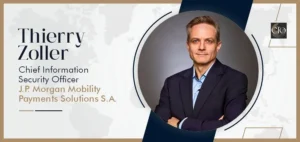Adaptive Leadership
In the modern dynamic world, adaptive leadership has proved to be a crucial reaction to the complexity of uncertainty and disruption. As the world becomes ever more unpredictable, leaders must transition out of giving specific solutions and into establishing cultures where teams have the freedom and authority to innovate, adapt, and thrive.
Why Uncertainty and Disruption Demand a New Leadership Style
The modern landscape is characterized by uncertainty. Be it due to fast technological transformation, geopolitical volatility, or environmental crisis, leaders are usually confronted with unclear scenarios, and there is no simple way to fix them. All the while, disruption transforms industries, organizations, and society. Under these circumstances, the old strategies cease to exist, and the hard leadership practices cannot keep up. As adaptive leadership also acknowledges, these are not passing difficulties and cannot be dealt with as such: challenging is not a verb but a predisposition to be withstood and lived with moment to moment, one adventure at a time.
Core Principles of Adaptive Leadership
One key practice in adaptive leadership is knowing how to differentiate between technical and adaptive problems. Technical problems have predetermined solutions that can be applied by those in positions of authority or experts. Conversely, adaptive challenges demand that stakeholders change their values, reconsider previous assumptions, and test new practices. Leaders should be able to drive their teams through these more profound changes by fostering exploration and collective problem-solving.
Adaptive leadership is also the ability to accept uncertainties rather than to resist them. Effective leaders do not lie to themselves that they possess every solution to every problem; they come clean about what they do not know and build trust by engaging others in the decision-making process. This creates a sense of openness and cohesiveness within the team during disruption.
Another essential skill is the ability to maintain adaptive tension. Instead of eliminating discomfort, leaders should be able to deal with it and maintain the level of pressure sufficient to spur innovation. This tension equips healthy change through inspiration, but not a feeling of being overwhelmed by the team.
Adaptive leadership embraces experimentation. Leaders would create cultures of low-stakes experimentation and failure as learning. The cyclic nature of this process means that organizations can experiment, receive feedback, and change strategies with time.
Lastly, emotional intelligence supports all components of adaptive leadership. Leaders can effectively deal with the disruption by balancing self-awareness, empathy, and their ability to cope with emotions. These attributes contribute to creating a psychological safety of the teams, building resiliency, and engagement in uncertain conditions.
Integrating Adaptive Leadership with Broader Frameworks
Adaptive leadership is equally consistent with other strategic frameworks applicable in volatile environments. Leaders in new VUCA (Volatile, Uncertain, Complex, Ambiguous) and BANI (Brittle, Anxious, Nonlinear, Incomprehensible) systems require more than stopping planning to act, as they are required to learn and experiment in real-time.
It further enhances the idea of organizational ambidexterity, the capacity to balance efficiency with innovation. Whereas there are teams that aim at streamlining the existing impacts, there are those that are willing to learn the new levels. This balance can be accomplished through adaptive leadership that promotes a culture of experimentation without sacrificing performance.
The adaptive approach is also useful in ecosystem leadership, an emerging model that involves organizations like a business in a network, as opposed to a silo. Leaders are encouraged to play a catalyst role, establishing a trust-based relationship and creating alignment among various stakeholders in a more integrated world.
Challenges and Tensions
Adaptive leadership, although beneficial, is not simple to execute. Leaders have to be open to relinquishing authority, acknowledge their lack of certainty, and allow change to occur without assured results. This involves navigating discomfort in a team without abandoning it and entails emotional discipline and an acceptance of ambiguity.
Another associated problem is that of trading short-term performance for long-term change. Adaptive leaders must bring results and win a change of mindsets and behaviors simultaneously, and usually within organizations that are hard to change. Persistence, humility, and deep reflection mixed with decisive action are all key to success.
End Note
Adaptive leadership is one way forward in a world where uncertainty and disruption become the new reality. It helps leaders and organizations not only to react to change, but to learn, mature, and lead change. Adaptive leaders deal with volatility by embracing complexity, empowering teams, and encouraging a culture of experimentation, turning volatility into opportunity. Such a strategy not only allows organizations to survive in times of disruption but also to emerge and flourish through it.
Read More : U.S.–EU Trade Deal: 15% Tariffs, $1.35 Trillion in Energy and Investment Commitments




